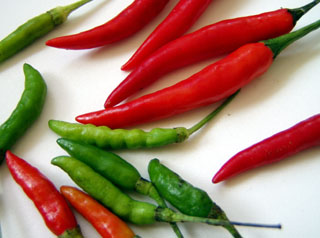As I write another dusting of snow is covering my neck of the woods in North Norfolk. Although I am aware of the many inconveniences snow has brought to Norfolk this year, I nevertheless welcome seasonal weather conditions that stand to delineate one quarter of our year from another. To know that the new growth of Spring will be followed by the searing heat of summertime and capped by Autumnal mist and the smell of Guy Fawkes night, all became notable pointers to the year’s progression. Such experiences seem more like distant childhood memories than recent encounters and although with the exception of local opinion I do not go back as far as most meteorological records, there does seem to be some evidence to validate this viewpoint.
Weather conditions aside it will not have been difficult to ignore the more secular pointers to our Christmas season. New Year sales beginning in the Old Year, lack of grit near my house every morning and panic buying of mincemeat and marzipan at the local shop. Our food intake begins to mirror the fringe events of a Bacchanalian feast, with unwanted extra courses interspersed with Brazil nuts and Turkish delight, minced pies and chocolate mints. Love it as I do, with our luncheon table resembling the Dickensian illustration on a Christmas card, I yearn for change and clear culinary focus all too quickly. Once that most delectable of cuisines, cold turkey and assorted pickles is out of the way and the Black Magic box houses only the nastiest of soft creams – made softer by occasional inspection – I look to add some fire and heat to my dishes. I am apparently not alone in this desire as many Indian restaurants report a surge in customers in the days after advent. Whoever they all are, we share one thing in common and that is the most un-English of spices, the chilli pepper. Fifty years ago it was regarded as the fruit of the devil, nowadays it adds the kick to the new British favourite Chicken Tikka Masala. My requirements were equally, if not outrageously, exotic. I was handed my tree present of a newly published cookbook of modern Mexican cuisine and the first scan took me through page after photographic page of fresh and drying Chillis littering the various street markets of South America. I drifted heavenwards.
I am an early convert to the power of the Capsicum and have been using the spice in various guises, since early student days. In powdered form it made the world of difference to the weekly diet of baked potatoes and welsh rarebit. What I had never investigated was the range of different flavour profiles that can be engineered with these fiery little beasts. This was the book that both illustrated the 200 + range of assorted varieties as well as justified what I now come to understand as a minor addiction to the plant. I cannot go more than a week without some form of hot fix in whatever guise it presents itself, so a genuine con carne was the first welcome outcome of my new present.
What I did digest, apart from the ‘bowl of red’ we cooked, was the relative scoring of Chilli peppers. This scale, widely published in the paranoid food culture of the United States, was the invention of an American – one Wilbur Lincoln Scoville. Some may consider that Wilbur deserved to get out a little more, but this eminent chemist established a universal benchmark for all things hot and painful and created the Scoville Heat Unit or SCU. This was back in the twenties when America was not at its financial best, but was eternally grateful to the Mexican influx of rural peasant food served from vast cauldrons in the street restaurants of the southern states. The staple of all Mexican cooking is the wide availability and consistent use of their home grown treasure, the Chilli. Without the post-Moorish Empire grab by the Portugese and the Spanish conquistadors, our devilish little spice would never have travelled as far afield as India, China, Korea and Thailand – where this Mexican ingredient now highlights most of these comparatively modern food cultures. Chilli it seems was first cultivated in Mexico some 6000 thousand years ago. It now had scientific validation with the ability to cause pain as well as pleasure, heal as well as hurt. Scoville established that the simple sweet or bell peppers we buy as a vegetable rate at a mere zero on his scale. Move up to the pasilla and ancho at a thousand SCU’s or so, through to the common zalapeno casually tossed on your American Hot pizza and charting at two to five thousand, of which you are doubtless aware. With Cayenne clearing the passages at 50,000 SCU it is no doubt that in its liquid form Tabasco, you would not want a large glass. When I find a supplier of the mysteriously named Naga Jolokia pepper from India, scoring a staggering one million SCU’s I will give you a call, although I fear from surviving eye witnesses, you may just record a little heavy breathing in 2010 if my research is as thorough as I anticipate.

